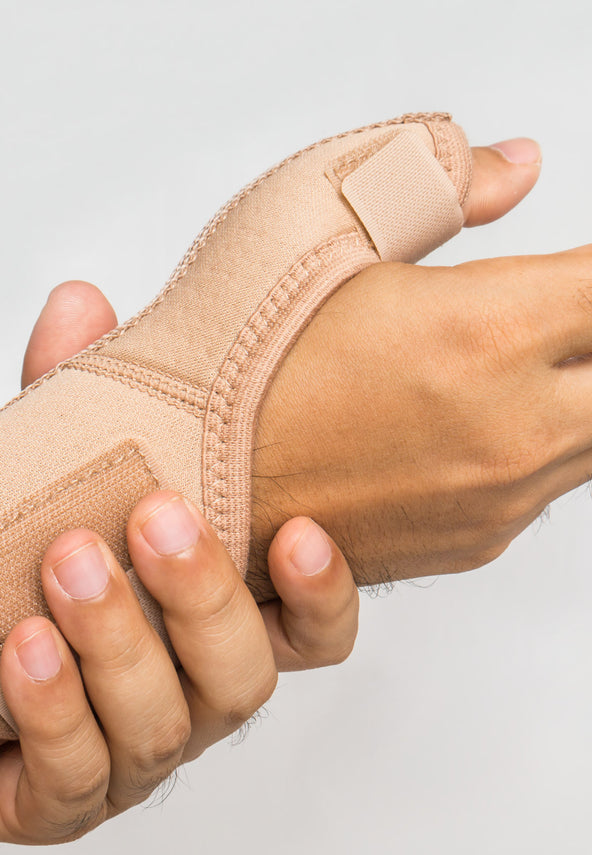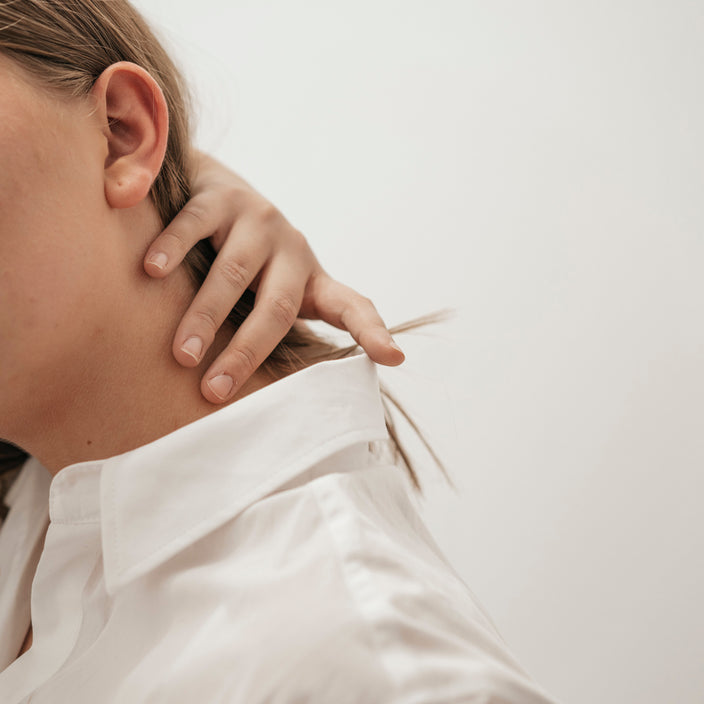Trigger finger
Trigger finger is a common ailment in the UK, appearing out of the blue. It is a condition that affects the tendons in your hand, which makes it difficult – or even downright impossible – for you to bend your fingers.
Typically, the risk of getting a trigger finger is associated with age, as it increases as you get older. However, children and young adults also suffer from it occasionally. In this piece, you can learn more about the facts behind trigger fingers and gain insights into dealing with it and getting the best possible assistance, should you be unfortunate to suffer from it in the future.
What is a trigger finger?
If you experience pain, irritation, inflammation, or swelling in your tendon at the finger’s base, there is a risk that you are suffering from a trigger finger. More specifically, you may ask yourself, “Why does my finger lock in a bent position?”. Well, this is what a trigger finger does. First and foremost, it causes pain and irritation in your finger and hands. Secondly, it causes your fingers to lock in an awkward position, making it difficult to stretch them. This happens as the tendon has swollen and does not move fluently in the tendon sheath.
When the tendon gets pinched, it is challenging to move your finger as it latches on to the tendon sheath, which is what causes the fingers to lock. It requires more force than you typically provide with just one finger, which is why you will need a flat surface on your second hand to pull the finger back into place. Once you do, you will hear a slight “pop” from your finger as the tendon releases from the sheath.
The name “trigger finger” comes from the position your hand will take once it pulls together. It almost makes it look like you got your hand on a revolver, similarly to the cast of an old western.
Source: NHS

Trigger finger symptoms
The primary symptoms of a trigger finger will primarily be that you experience soreness or pain in your hands and fingers when bending and stretching the affected finger. In some cases, you may even experience a clicking sound from the tendon in the finger as it manoeuvres through the sheath. Below, you can find a complete list of the symptoms related to the trigger finger.
Pain: A trigger finger will typically start through some discomfort at the finger base, where it joins the palm. However, the pain and soreness can escalate from here. The pain will often increase if untreated and only appear when a gripping motion is made. When resting, it may not hurt. Over time, an increased fluid production in the tendon sheath will cause added pressure, and pain will ultimately be present even when not utilizing the affected finger.
Swelling: If untreated for a more extended period, there may be a development of a lump at the A1 pulley due to nodular swelling within the tendon or the development of a fluid-filled cyst.

Stiffness or loss of motion: A trigger finger can mean a lack of ability to bend your finger. This is most common in chronic cases that have been left untreated. It will be pretty painful to try and bend it due to the compression of the fluid. Trigger fingers will ultimately lose the opposite movement – to straighten the finger. Some people suffering from the condition will feel the pain trying to straighten an affected finger fully. The volar plate’s ligament will shorten when the joint is not fully stretched for a more extended period, ultimately reducing motion.
Mechanical symptoms: A trigger finger can cause abnormal popping, catching, or locking sensations. Such strange phenomena occur while bending or straightening the finger, or both. Early on, the symptoms may be mildly painful, but as the tendon and pulley interaction becomes tighter, the pain can increase.
Source: ASSH.org

What causes trigger finger?
Tendons are fibrous cords that have a protective sheath surrounding them. When the affected finger’s tendon sheath becomes irritated or inflamed, it will interfere with the gliding motion in the sheath. The sheath will thicken through slight scarring if this occurs over a longer period.
While it is difficult to name specific causes for trigger fingers, certain risk factors are worth keeping an eye out for. First, repetitive motions such as gripping will cause congestions that add to the irritation or inflammation in the tendon. Such actions typically come from occupations or hobbies that involve doing the same movements daily—for instance, sitting behind a computer doing work. Here, you can experience finger pain from mouse work.
Secondly, specific health issues such as diabetes come with a higher risk of developing trigger fingers – on multiple fingers at the time. As such, you will often require surgery to deal with the condition if you also have diabetes. More on this later.
Lastly, you are more prone to developing trigger fingers if you are female. The verdict is still out, why this is the case.
Source: Mayo Clinic

How to cure trigger finger
You can loosen the trigger finger by using your other hand, a tabletop or similar, so that you may apply enough force to straighten it out. However, this will only have a short-term effect, just as there are no definite trigger finger exercises that one can use for treatment.
In some cases, it happens that a trigger finger will disappear on its own through resting, but no one knows how likely that is to happen. Therefore, one will typically treat it through bandaging, in a hospital or through an operation. Another alternative approach is wrapping the affected finger between a plastic splint and some bandage to fixate it and reduce movement. This provides the best source of rest if the finger is to heal on its own.
The most common treatment will be through non-steroidal anti-inflammatory drugs – NSAIDs. The goal here is to alleviate the irritation that has settled in the tissue around the tendon to slide again without difficulty in the tendon sheath. It is estimated that this form of treatment is the most effective, so it is also considered the preferred one by medical professionals.

If previous treatment alternatives do not relieve you of pain, one can always resort to surgery as a last resort. Through an operation, the tendon sheath is split through a small cross-section at the specific finger, which will allow the tendon to run smoothly. Ultimately, it will make the symptoms disappear and ensure that it rarely happens to the same finger in the future.
However, surgery will always be a last resort, as you may need to take 2-4 weeks of work to provide your finger with absolute rest to recover fully.
With kids, you generally see more gentle treatment alternatives:
Typically, the thump will be completely straightened.Physiotherapy and occupational therapy often deliver a successful result combined with bandaging.If the finger has been bent for more than six months, trigger finger surgery is recommended, as the effect of physiotherapy or occupational therapy is not working.
Source: NHS

The difference between trigger finger and mouse finger
While it can be challenging to track down the root cause of trigger fingers, it is much more straightforward with a mouse finger. While it is not currently an official repetitive strain injury (RPI), it has become a term to describe finger pain from mouse wok through extensive computer use. Typically, the index finger is in jeopardy, as the most frequent click is the left-click. As we know, tendonitis comes from repetitive motions, why it should be no surprise that you can get tendonitis from mouse clicking.
Source: Ergovancouver
How to prevent trigger finger
As mentioned previously, the trigger finger is a common disorder in the UK, occurring more frequently with age. Fortunately, it is more rarely seen in children, adolescents, and young adults.
It can be difficult to prevent completely, as one cannot pinpoint any specific reasons it happens. However, repeated movements are proven to create inflammation. If you have a job where you use your hands all day, for example, behind a keyboard or computer mouse, make sure you have the ergonomically proper equipment and give you the right support.
Additionally, it may be relevant to have a trigger finger splint placed on your finger, which helps to relieve the finger for a period. This type of splint can be applied to all fingers except the thumb. If you have challenges with a trigger finger in the thumb, you can instead use an elastic bandage, which provides the correct relief and calm.
Source: NHS

How can you reduce strain in your daily life?
By reducing the strain on the fingers, you can experience relief of pain and discomfort associated with trigger fingers. Do you suspect that the condition may have occurred due to your work with a computer mouse? It may be an idea to change your working methods to become gentler on your hands and fingers.
Here you can replace your mouse with a more ergonomic mouse that relieves your hands and fingers by allowing you to use both hands and reduce the number of mouse clicks.


How do you treat repetitive strain injuries?
Since repetitive strain injuries, also called mouse arm, is often connected to computer work and poor ergonomics such as faulty installed equipment, it is good to...

5 tips to reduce sick leave with optimized ergonomics
Good ergonomics prevents illness and injuries to employees. Conversely, poor ergonomics contribute to high sick leave and work-related illness. As such, there is every reason to...

Are you suffering from pain and soreness in your arms and shoulders?
More than a fourth of English workers have experienced pains due to working on a computer mouse. It is understood that a tight schedule and stress...
